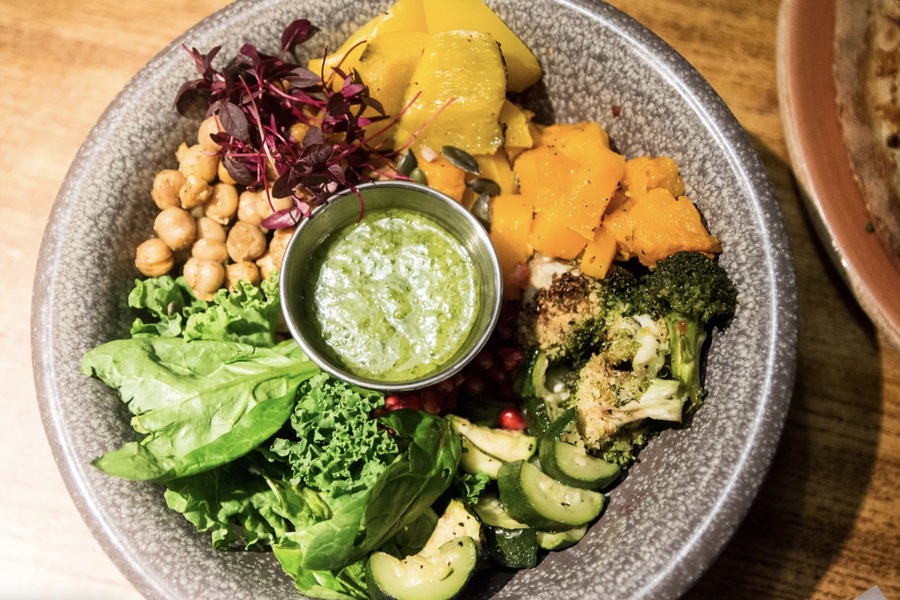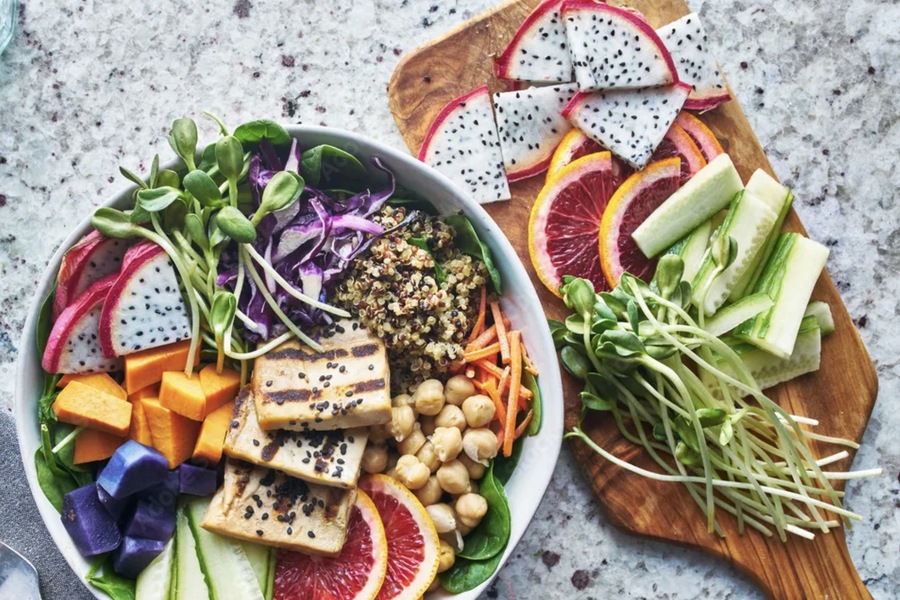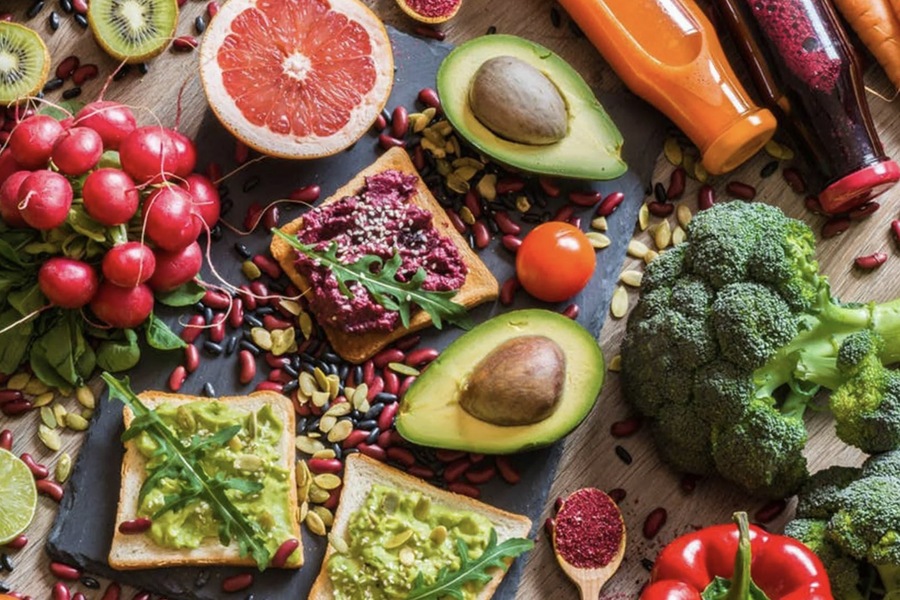As vegetarianism and veganism continue to rise in popularity, people around the globe are embracing plant-based diets for ethical, environmental, and religious reasons. Despite persistent myths that plant-based food is bland or uninteresting, world cuisines reveal an extraordinary variety of vegan-friendly dishes, rich in flavor, texture, and cultural heritage. From the vibrant spice-laden stews of Ethiopia to the meticulous artistry of Japanese temple cuisine, plant-based dishes demonstrate how diverse and fulfilling vegan food can be, especially when enjoyed at unique dining spots like rooftop bars in the city, where creative vegan menus are often paired with stunning views..
This guide delves deeply into the vegan-friendly cuisines of various countries, offering a comprehensive exploration of the dishes, ingredients, and traditions that make plant-based eating an exciting global journey.
Ethiopian Cuisine: The Land of Lent-Friendly Feasts
Ethiopia’s rich culinary tradition is deeply intertwined with its religious practices. The Ethiopian Orthodox Church observes fasting periods totaling approximately 180 days a year, during which believers abstain from all animal products. As a result, Ethiopian cuisine is inherently vegan-friendly, offering a wide array of dishes built around vegetables, grains, and legumes.
Key Dishes and Ingredients
Injera: This spongy, sourdough flatbread is made from teff, a gluten-free ancient grain packed with nutrients. Injera serves as both a plate and a utensil, soaking up the flavors of accompanying dishes.
YetsomBeyainetu: A colorful platter of lentils, split peas, collard greens, and other vegetable-based stews served on injera. Each dish is seasoned with a unique blend of spices, such as berbere (a fiery spice mix) and niter kibbeh (spiced oil).
ShiroWat: A thick, spicy chickpea stew flavored with garlic, ginger, and berbere, offering a hearty and satisfying meal.
Ethiopian cuisine emphasizes communal dining, making it an excellent choice for sharing vegan dishes with friends and family.
Chinese Cuisine: Centuries of Buddhist Vegetarian Influence
Chinese cuisine, often associated with its diverse meat dishes, also boasts a longstanding tradition of vegetarianism rooted in Buddhist practices. For centuries, Buddhist monks have cultivated plant-based recipes that prioritize fresh ingredients and complex flavors.
Key Dishes and Ingredients
Buddha’s Joy: A harmonious blend of seasonal vegetables, mushrooms, and plant proteins, often stewed or stir-fried to perfection.
Congee: A comforting rice porridge that can be enhanced with a variety of savory toppings, including mushrooms, pickled vegetables, and tofu.
Dumplings and Baozi: Steamed or fried dumplings filled with vegetables like cabbage, carrots, and mushrooms, or baozi (steamed buns) stuffed with sweet bean paste.
Hong Shao Kao Fu: Braised wheat gluten cooked in a savory soy-based sauce, often paired with wood ear mushrooms and bamboo shoots.
Soy products like tofu, soy milk, and fermented bean curd are staples in Chinese vegan cuisine, providing protein and umami flavor.
Georgian Cuisine: A Hidden Vegan Gem
Georgia, nestled at the crossroads of Europe and Asia, is renowned for its bold and hearty flavors. The concept of samarhvi, or fasting foods, ensures that vegans can enjoy a variety of dishes during religious fasting periods.

Key Dishes and Ingredients
Nigvziani Badrijani: Eggplant rolls stuffed with a rich walnut paste, spiced with garlic, coriander, and pomegranate seeds.
Mchadi: A simple yet delicious cornbread often served with bean stews.
Lobio: A traditional bean stew seasoned with onions, garlic, and cilantro.
Pkhali: A mix of vegetable and walnut spreads, featuring ingredients like spinach, beets, or eggplants, topped with pomegranate seeds.
Georgia’s love for fresh herbs like cilantro, dill, and parsley enhances the flavors of its vegan dishes, creating meals that are both vibrant and satisfying.
Japanese Cuisine: The Harmony of ShojinRyori
Japanese cuisine, while famous for its seafood, has a long-standing tradition of vegan cooking inspired by shojinryori, or temple cuisine. Developed by Buddhist monks, this cooking style emphasizes simplicity, balance, and the use of seasonal ingredients.
Key Dishes and Ingredients
Tofu and Soy-Based Products: From silky tofu to fermented natto, soy products are central to Japanese vegan dishes.
Miso Soup: A savory soup made with fermented soybean paste, often accompanied by seaweed, tofu, and scallions.
Vegan Sushi: Rolls filled with cucumber, pickled radish, avocado, or seaweed instead of fish.
KabochaNimono: Simmered pumpkin dish with a light soy and mirin glaze.
Each shojinryori meal incorporates five colors (white, black, red, green, and yellow) and five tastes (sweet, salty, bitter, sour, and umami), creating a dining experience that is both nutritious and visually stunning.
Levantine Cuisine: A Plant-Based Paradise
The Levant, encompassing countries like Lebanon, Syria, Jordan, and Palestine, offers a culinary tradition that celebrates fresh, wholesome ingredients. Many Levantine dishes are naturally vegan, making them a staple for plant-based eaters.
Key Dishes and Ingredients
Hummus: A creamy chickpea dip flavored with tahini, garlic, and lemon juice.
Falafel: Deep-fried balls or patties made from ground chickpeas or fava beans, seasoned with parsley, garlic, and cumin.
Baba Ganoush: A smoky eggplant dip blended with tahini, olive oil, and lemon.
Tabbouleh: A refreshing salad made from parsley, tomatoes, bulgur, and lemon juice.
Levantine cuisine’s reliance on olive oil, fresh herbs, and legumes ensures that vegan dishes are both flavorful and nutritious.
Mexican Cuisine: A Vegan Fiesta
While Mexican cuisine is often associated with meat and dairy, its reliance on staples like corn, beans, and rice provides a wealth of vegan options. These ingredients are deeply rooted in the country’s agricultural history and indigenous traditions.
Key Dishes and Ingredients
Guacamole: A creamy avocado dip seasoned with lime, garlic, and cilantro.
Black Bean Soup: A hearty and satisfying dish made with slow-cooked beans, tomatoes, and spices.
Vegetable Tacos and Fajitas: Grilled vegetables like peppers, onions, and zucchini served in soft corn tortillas.
Tamales: Corn dough stuffed with vegetables or beans, wrapped in corn husks, and steamed to perfection.
Mexican cuisine’s use of bold spices and fresh ingredients makes it a vibrant choice for vegans.
Italian Cuisine: Mediterranean Plant-Based Delights
Italian cuisine, known for its indulgent flavors, offers a surprising number of vegan-friendly dishes, especially in the southern regions where vegetables and olive oil take center stage.

Key Dishes and Ingredients
Caponata: A Sicilian eggplant stew with olives, capers, and tomatoes.
Pasta Aglio e Olio: A simple yet flavorful dish made with garlic, olive oil, and chili flakes.
Minestrone Soup: A vegetable-packed soup often made with beans, tomatoes, and pasta.
Bruschetta: Toasted bread topped with fresh tomatoes, garlic, and basil.
The emphasis on high-quality, fresh ingredients ensures that Italian vegan dishes are both satisfying and delicious.
Conclusion: A World of Vegan Possibilities
Global cuisines prove that vegan food is far from monotonous. Each culture brings its unique flavors, ingredients, and traditions to plant-based cooking, creating a rich tapestry of dishes that cater to every taste. Whether you’re savoring the spice-laden stews of Ethiopia, the umami-packed delicacies of Japan, or the vibrant street food of Mexico, exploring vegan cuisines is an adventure that celebrates diversity and creativity.
As veganism continues to grow, so does the availability of vegan-friendly restaurants, products, and recipes. This makes it easier than ever to embark on a plant-based journey and discover the incredible variety the world has to offer—one delicious dish at a time.

Soccer lover, vegan, DJ, Saul Bass fan and fullstack designer. Working at the crossroads of art and sustainability to craft delightful brand experiences. Let’s design a world that’s thoughtful, considered and aesthetically pleasing.
